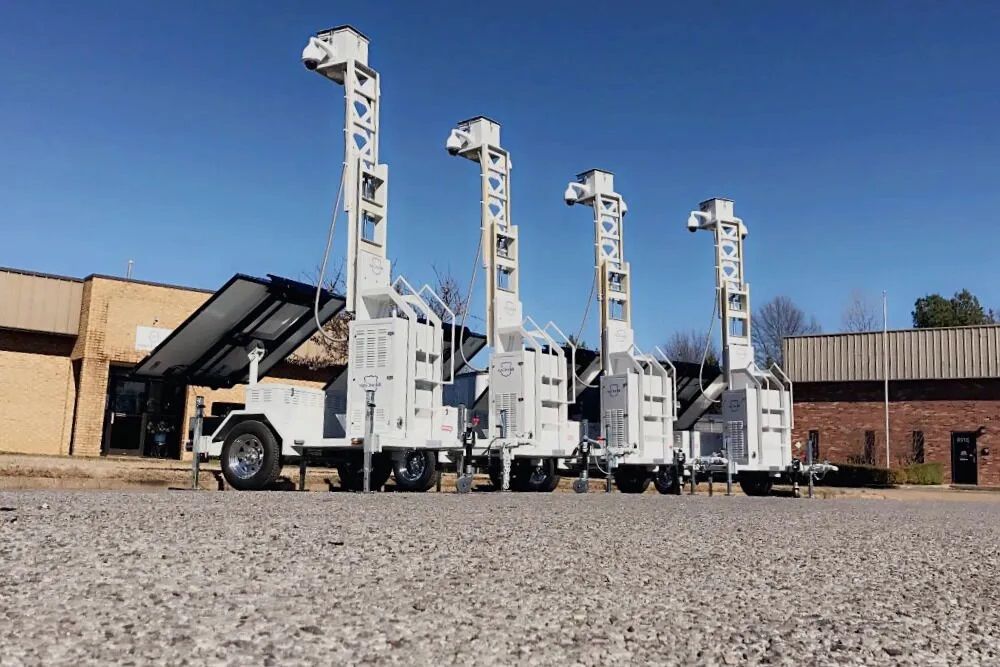The mobile surveillance trailers secured by prem tech are used to monitor and track people or locations for various purposes. Modern mobile surveillance units undergo rapid advancements to gather real-time data and use sophisticated analytics.
Components of the mobile surveillance units
A mobile surveillance trailer includes various essential components for effective monitoring and flexibility. The foundation may include these:
- wheeled base
- facilitating easy movement
- relocation as needed
A blend of one or more solar panels ensures a sustainable source of power with a battery or battery bank for energy storage. An adjustable mast provides a vantage point for optimum surveillance. The central hub is the head unit that attaches to the mast top and houses a mix of security measures, including:
- cameras
- floodlights
- strobe lights
- loudspeakers
The capabilities of mobile surveillance trailers
The mobile surveillance units are built with advanced technologies to gather and analyze data in real-time. These technologies include:
- cameras
- microphones
- radar
- GPS
- Other sensors
These are designed to perform various functions, such as:
- detect and track movement
- capture images and video
- monitor communication channels
The mobile surveillance units can have one or more forms of cameras and thermal cameras.
All units are customized to fit the needs of the user. A lot of MSUs are equipped with sophisticated software that analyzes the data captured, such as:
- facial recognition algorithms
- license plate recognition software
- predictive analytics programs
These can identify patterns and predict forthcoming behavior. The software allows the unit to communicate with other units or command centers in real time, allowing rapid response to arising situations. Most of them are live-monitored by a team of security professionals at the location. It enables you to respond directly to any alarms and track dispatch protocols defined by the user before arming the unit/s.
Factors of the MSUs
The MSU cameras vary on several factors, such as:
- site characteristics
- budget constraints
- company preferences
- organizational goals
These cameras serve further operational requirements at different levels:
- detection
- observation
- recognition
- identification
In the detection function of the MSU, the role of the camera is to identify situations or events that deviate from the norm like the presence of a figure or the vehicle. In the progress of the identification and recognition levels, the cameras perform these three functions:
- employ facial recognition
- license plate identification analytics
- record/live stream at high resolution and pixel density
When this ability climbs to these levels becomes contingent on various factors, such as:
- camera quality
- strategic camera placement
- integration of AI analytic software
- camera height
- Other relevant factors
You may also like
-
Looking at the Time and Attendance Systems in Malaysia: How Time Attendance Systems Work
-
Optimizing Your Web Hosting Resources: A Guide
-
The capabilities of nude networks
-
Supercharge Your Pinterest Profile: Buy Active Followers
-
Efficiency Amplified: Buying Views for Multiple Instagram Posts Simultaneously
 Risk Takers’ Playground: Navigating the Highs and Lows of Hedge Fund Hype
Risk Takers’ Playground: Navigating the Highs and Lows of Hedge Fund Hype  Learn More About Binance
Learn More About Binance  Mastering the Stock Market: Insights from a Professional Investor – Kavan Choksi Professional Investor
Mastering the Stock Market: Insights from a Professional Investor – Kavan Choksi Professional Investor 

